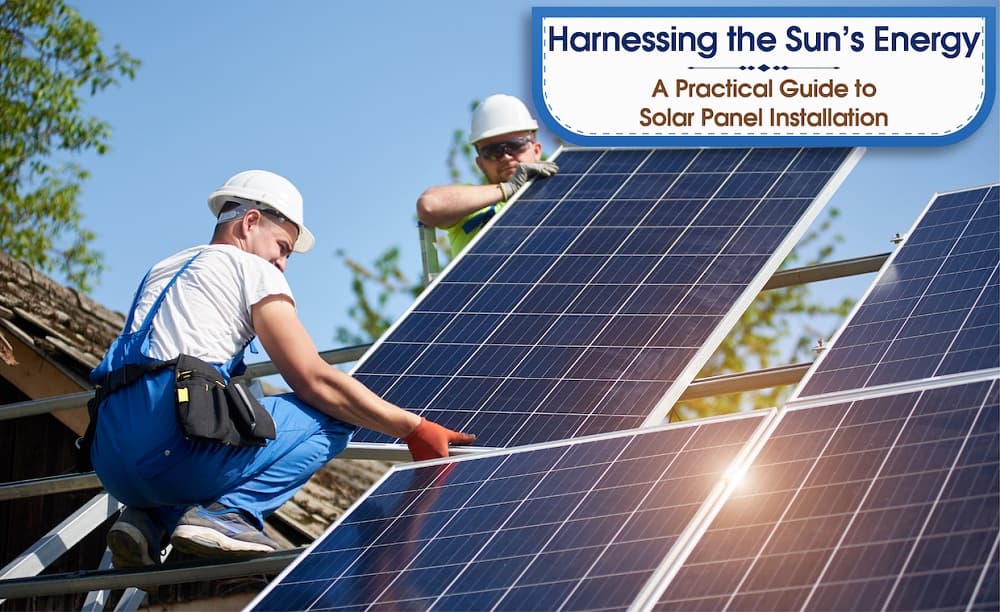
With the growing concern for the environment and the rising costs of traditional energy sources, solar power has emerged as a viable and sustainable solution, and it seems that everyone is harnessing its power! The good news is that it’s an energy source that will not run out anytime soon, and by harnessing the sun’s abundant energy, solar panels offer a clean and renewable source of electricity. If you’re considering solar panel installation into your property, here are some of the best ways to do so, ensuring optimal efficiency and cost-effectiveness.
01. Assess your Energy Needs

The first thing you need to do before delving into solar panel installation is to evaluate your energy requirements. Analyse your past energy bills to determine your average consumption and identify peak usage periods. This assessment will help you determine the size and number of solar panels needed to generate sufficient power for your property.
02. Determine the Optimal Location

Choosing the right location for your solar panels is essential to maximise their efficiency. Ideally, as suggested by a commercial solar panel company like Atlantic Renewables, the panels should receive direct sunlight for most of the day. South-facing roofs typically offer the best orientation, as they capture the maximum amount of sunlight. However, east and west-facing roofs can also be viable options, depending on your specific geographical location.
03. Consider the Orientation and Roof Condition

Assess the condition of your roof before installing solar panels. For instance, if your roof requires repairs or replacement in the near future, it’s advisable to address these issues beforehand. Ensure that your roof is structurally sound and capable of supporting the weight of the solar panels. Additionally, you should consider the angle of your roof to optimise solar exposure. And on the subject of roof angle, this is something that matters too. If your roof has a 30-to-40-degree tilt, this is usually best, but your nearby solar panel installers can adjust the mounting to optimize efficiency. So don’t panic if you’ve got a flat roof!
04. Explore Roof-Mounted Panels

Roof-mounted solar panels are the most common and cost-effective option for residential and commercial properties. They can be installed on various types of roofs – including asphalt shingles, metal roofs, and tile roofs. Roof-mounted systems are relatively easy to install and do not require additional land space. However, it’s important to consult with a professional to assess the structural integrity of your roof and determine the best mounting technique.
05. Explore Ground-Mounted Systems

If your property has ample space and your roof is unsuitable for installation, ground-mounted systems are an excellent alternative. Ground-mounted panels can be installed in your backyard or an open area, orienting them towards the sun for maximum exposure. This option allows for easy maintenance and adjustments, but it requires a larger land area and may involve additional costs for installation and wiring.
06. Consider Solar Canopies and Pergolas

Another option would be solar canopies and pergolas, and they are becoming increasingly popular options for incorporating solar panels into different properties. These structures serve dual purposes, providing shade and protection while generating electricity. Solar canopies can be installed over parking spaces or outdoor areas, blending functionality and sustainability seamlessly.
07. Explore Solar Tiles and Shingles

For a more aesthetically pleasing integration, you might want to take a closer look at solar tiles or shingles. These options are designed to resemble conventional roofing materials while harnessing solar energy. Solar tiles and shingles can be seamlessly incorporated into your roof, providing a visually appealing and efficient solar power solution.
Conclusion
Embracing solar panel installation is a practical and environmentally friendly choice for powering your property. By assessing your energy needs, choosing the optimal location, considering roof condition, and exploring various solar panel installation options, you can maximize efficiency and cost-effectiveness while reducing your carbon footprint. Before you leave, make sure to check detailed blog on solar panel:
Best Solar Panel Installation In Florida






























